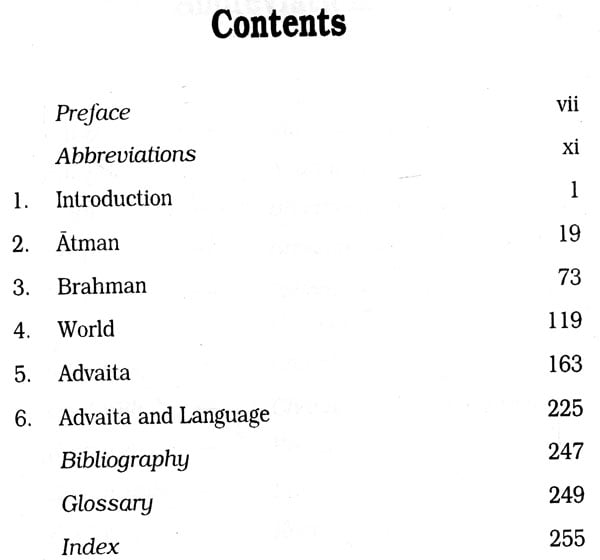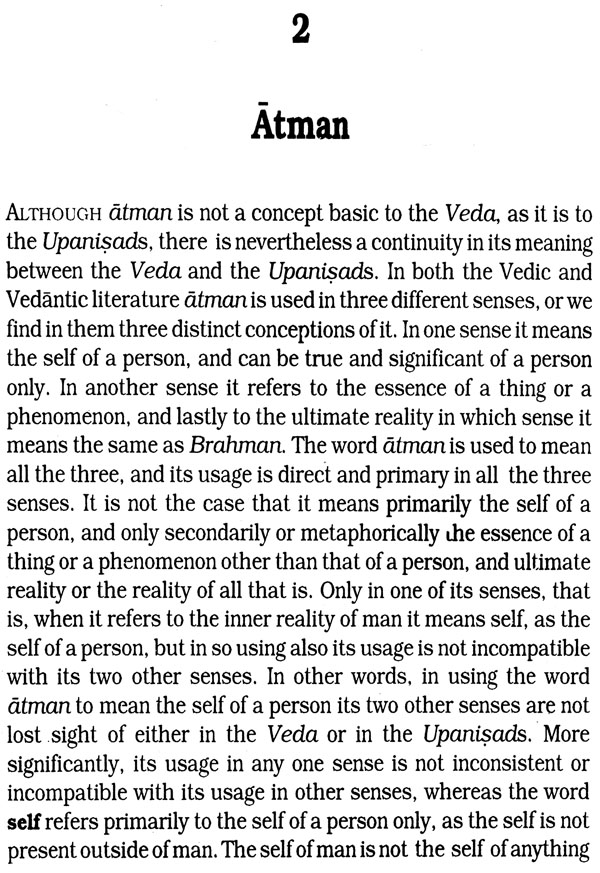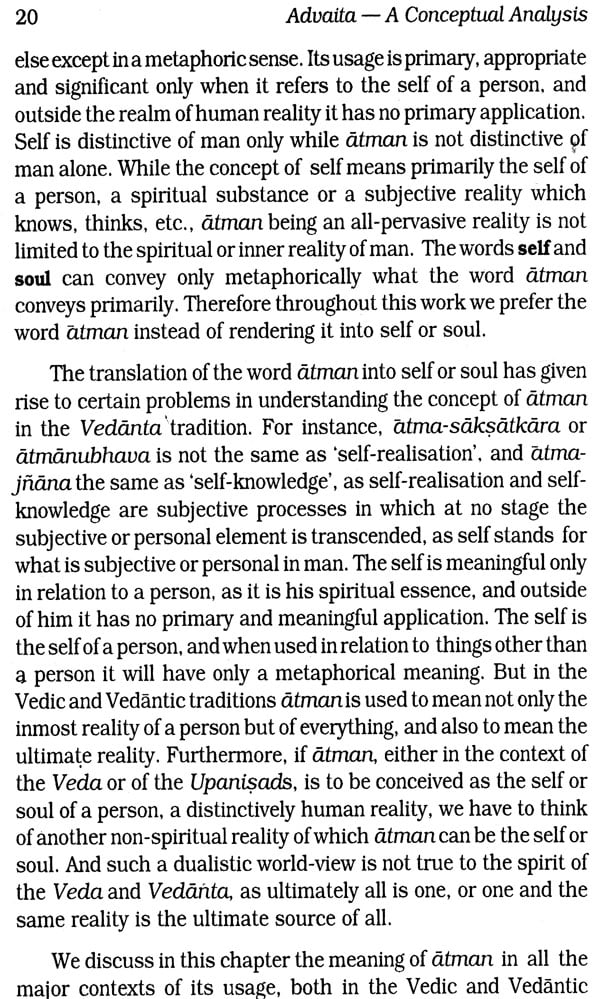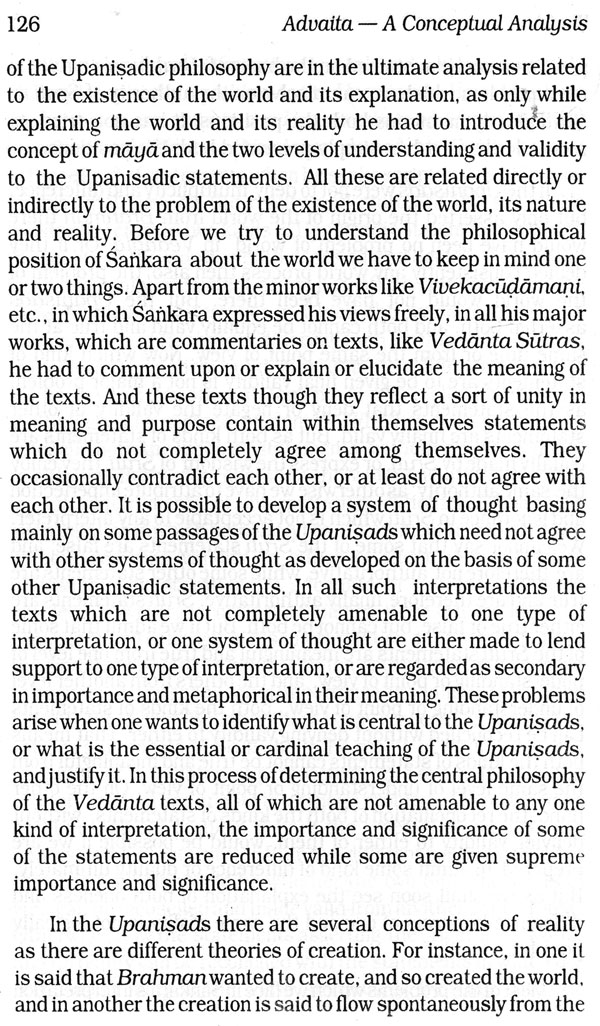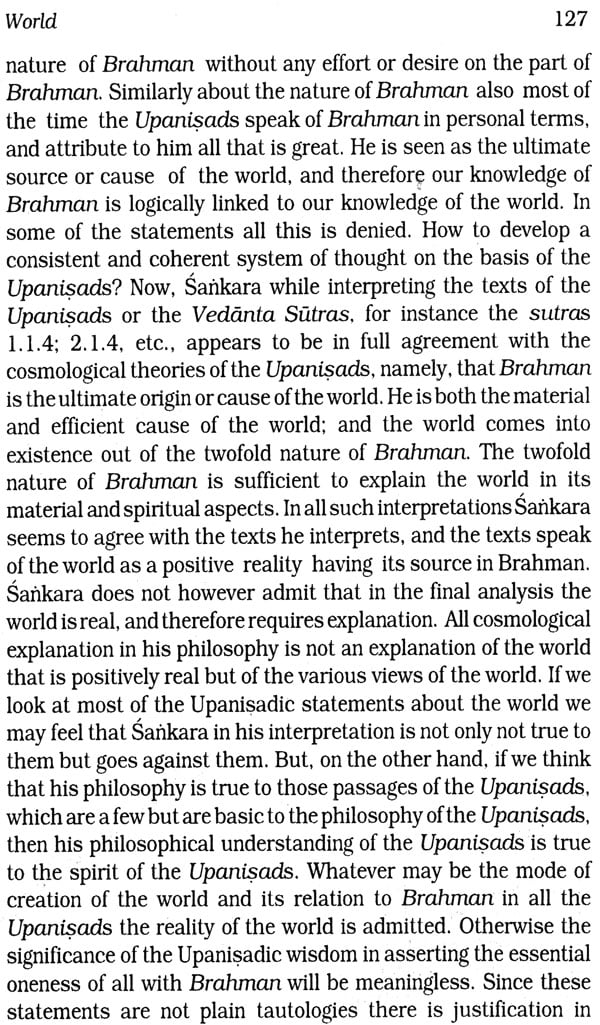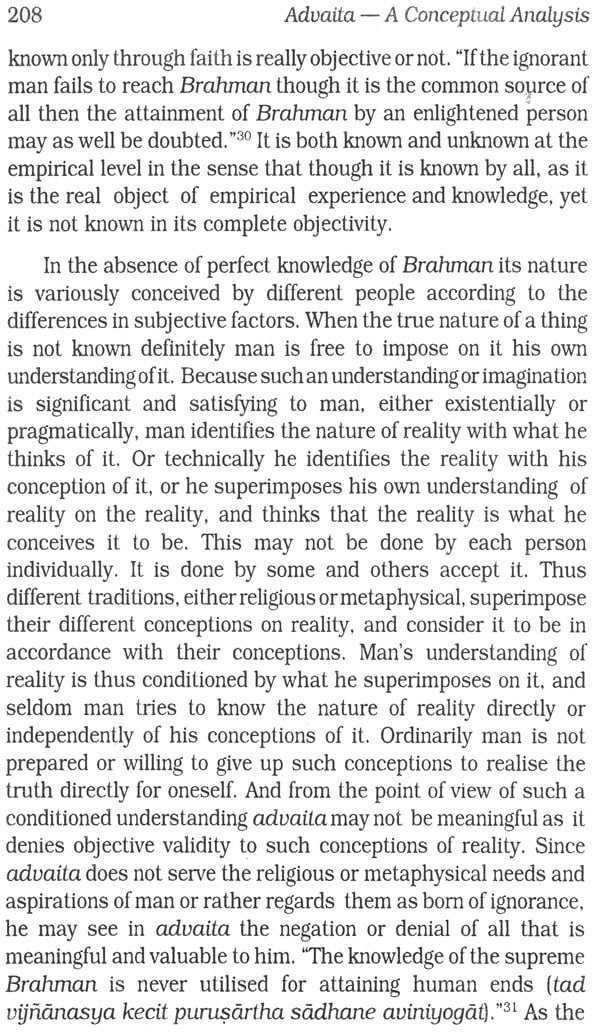
Advaita: A Conceptual Analysis
Book Specification
| Item Code: | NAV819 |
| Author: | A. Ramamurty |
| Publisher: | D. K. Printworld Pvt. Ltd. |
| Language: | English |
| Edition: | 2008 |
| ISBN: | 8124604460 |
| Pages: | 264 |
| Cover: | PAPERBACK |
| Other Details | 8.50 X 5.50 inch |
| Weight | 340 gm |
Book Description
For over a millennium, S' ankara's advaitism: non-dualism, has been exposed to extensive discussion, debate, and even polemic. In modern times, it has often been viewed as a system of metaphysical thought, involving a set of several subtle, though interrelated, doctrines — which all have the Upanisads at their base. But wittingly or unwittingly, modern theoreticians/ scholars tend to gloss over ankara's acumen as a philosophical analyst — though his interpretations of the Upanisadic writings have indisputably shown his uncommon, rather unrivalled, genius for logic and meticulous philosophical analysis. Professor Ramarriurty's work is, thus, a departure from run-of-the-mill studies attempting, as it does, an in-depth "conceptual analysis" of Advaita Vedanta. The book does not just present Advaita as a system of metaphysical thought. It is essentially an off-beat effort seeking to philosophically analyse the concepts of Atman, Brahman, and the World — which not only count among the fundamental concepts in the philosophic thought of the Upanishads, but also help capture the true meaning, profundity, richness and beauty of ankara's Advaita itself. Also, in the specific contexts of a.fikara's philosophy vis-à-vis the Upanisadic texts, Professor Ramamurty tries to explore, perhaps for the first time the meaning and functions of language and the problem that stem from it. Highlighting ankara's advaitism, his insistence on the "oneness of Brahman", the book offers a unique philosophic representation of the Upanisadic vision, which the scholars of classical Indian philosophy and discerning readers would love to share alike.
A. Ramamurty is a retired professor of philosophy, University of Hyderabad. He has worked on classical Indian philosophy, particularly Vedanta, and on religion. His other publications are: Advaitic Mysticism of 5ankara; The Central Philosophy of the Rgveda; Vedanta and its Philosophical Development; The Philosophical Foundations of Hinduism; and Indian Philosophy of Religion.
SEVERAL, philosophers and thinkers have been attracted to advaita in modern times, and most of them have tried to understand and present it as a system of metaphysical thought or as a set of doctrines on self, world and reality (Brahman) and their inter-relations. Although we find in the writings of Sankara an attempt to construct a system of metaphysics, or to interpret comprehensively the philosophy of the Upanisads from his perspective, he is known above all for his rigorous logical or philosophical analysis of some of the concepts fundamental to the philosophy of Vedanta, in which capacity, he is unmatching in the history of philosophy. And this aspect of his philosophical activity is his lasting contribution to philosophy, and is perennial in its influence. However, no significant and thorough-going work has been done on this important aspect of Sankara's philosophy. In this work a comprehensive attempt is made to present advaita as a philosophical analysis of some of the concepts in which man is perennially interested. The object of this work is not to present advaita as a system of metaphysical thought but to analyse philosophically some of the concepts fundamental to the philosophy of the Upanisads. A philosophical or logical analysis of the concepts of atman, Brahman and World is done with a view to comprehending the meaning of the concept of advaita, a concept central to the philosophy of Sankara. The meaning of the concept of advaita is sought to be understood in three distinct but significant ways which complement each other, enrich each other, and would help us in comprehending the meaning and beauty of the concept of advaita. In the final chapter an attempt is made, may be for the first time, to discuss and understand the meaning and function of language in relation to advaita, and the various problems it gives rise to. I express my thanks to Sri Susheel K. Mittal, Director of D.K. Printworld (P) Ltd., New Delhi who has taken keen interest in publishing this book. I also thank R.C. Pradhan who has gone through the entire script.
SINCE its systematic development and exposition by Sankara many philosophers and thinkers have been attracted to the philosophy of advaita, though it seems none, including Sankara, could make it completely intelligible and acceptable to the rational understanding of man, or provide an adequate explanation to all the philosophical problems it logically involves. Many have attempted in their own ways to provide more and more adequate explanation to those problems. However, most of them are aware of the fact that the philosophical explanation of the problems either seen or anticipated by them or raised by the opponents is not convincing, logically adequate and irrefutable. Yet advaita is not outright rejected by them. We find this ambivalent attitude to advaita with almost all the major thinkers of advaita. It may be due largely to the fact that advaita, at least in its original formulation in the Upanisads, is not strictly speaking speculative in character or simply a system of metaphysical thought based on man's rational understanding, but a vision or lived experience with the seers of the Upanisads. Even in the writings of Sankara, which are devoted more to a systematic and philosophical representation of the Upanisadic vision, only an attempt is made to make the Upanisadic vision or truth intelligible and meaningful to the rational understanding of man, but not to reduce it completely into a system of concepts. At the most his writings may help one to see the validity and meaningfulness of advaita, not strictly in a logical sense but in a different sense, as the primary object of his philosophical activity is not to make people understand and appreciate intellectually the truth of the Upanisads but to make them realise it directly. Just as the Veda becomes a-Veda when the truth is directly seen as the object of the Veda is not to describe or represent the truth in a straightforward way but to point to it, so also the writings of Satikara are meant to show a discerning person the intended meaning of the Upanisads, or the truth expressed through the Upanisadic statements, but not to determine or demonstrate it completely logically. Concluding his Keirikd on the Mtiridaya Upanisad, Gaudapada says: "Having realised the state (of advaita) which is extremely difficult to be grasped, profound, birthless, always the same, all-light and free from multiplicity or non-dual, we adore it as best as we can."' Commenting upon it Saiikara says significantly that advaita which is non-empirical (avyavahara) or empirically not intelligible or meaningful is viewed, represented and adored empirically to the best of our ability.2 No one can meaningfully assert that he has completely comprehended the meaning of advaita as it involves a basic contradiction of making advaita an object of one's knowledge or attainment, and the one who has at least grasped the profundity of the concept of advaita will have the humility to admit that what he has comprehended is only an approximation or an empirical mode of understanding advaita which transcends and yet comprehends all understanding.
**Contents and Sample Pages**
